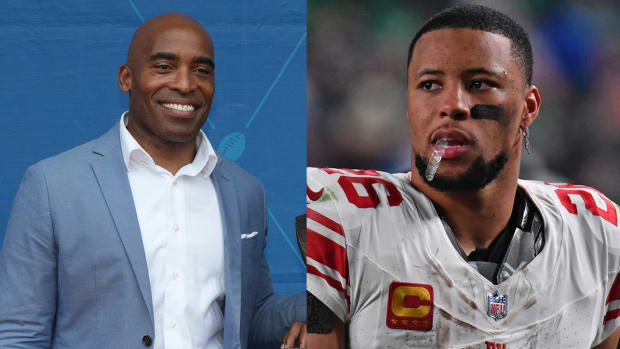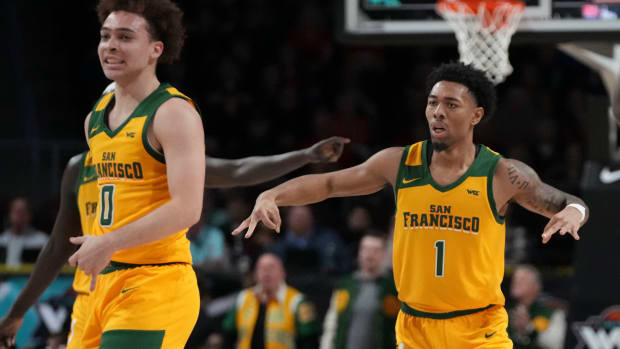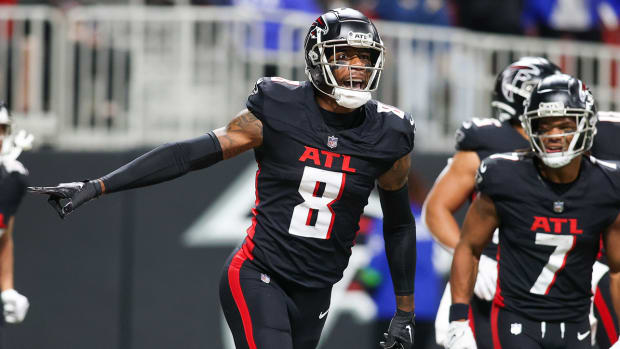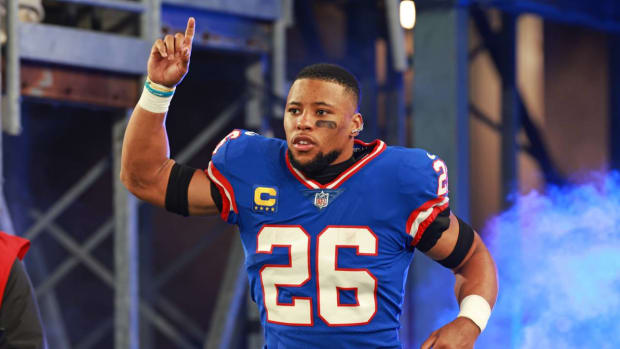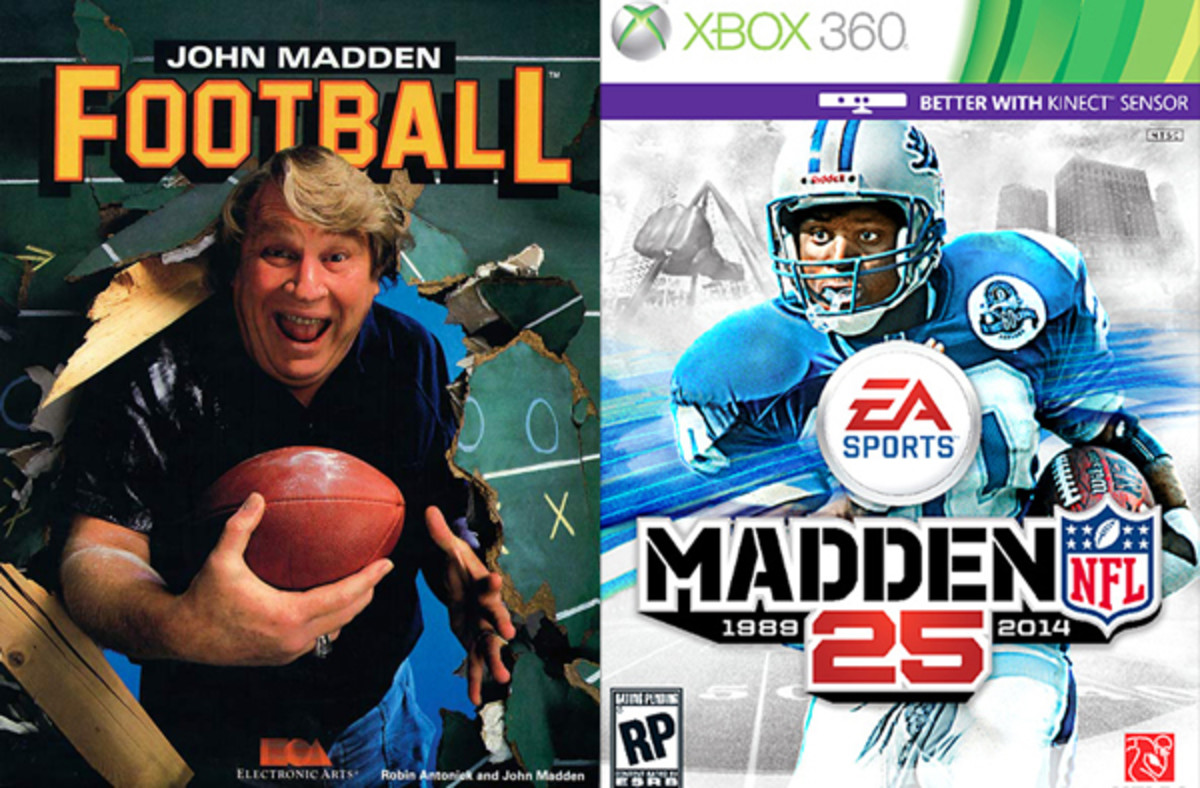
The Boom!s Keep Coming: A Q&A with John Madden About His Video Game Legacy
Today's release of Madden NFL 25 for the Xbox 360 and PlayStation 3 makes it a full quarter-century that gamers have been embracing big John's vision of digital pigskin. While it may be Barry Sanders' image on the cover of the latest edition, it's that iconic surname that keeps units moving off the shelves—to date, the franchise has sold over 100 million copies across all platforms over the years. In the lead-up to his eponymous game's silver anniversary, the coach sat down for a phone interview at his home in Pleasanton, CA and looked back at 25 years of virtual football.
SI: 25 years. It's a long time. What are your thoughts on everything that has changed, both culturally and technologically, since that first Madden game hit stores?
John Madden: Time flies, man. Think back to when it started—there weren’t really video games. The first edition of the game was produced to be played on a computer. We just had this idea that someday everyone’s going to have a computer and you’re going to want to do more on it than just the few things that you could do back then. [EA founder] Trip Hawkins was a computer genius. He saw the future. And then once the video game hardware came out, were able to adjust and adapt with the console games to make the game what it is today.
What was your goal when you set out to develop the game?
I wanted it to be a coaching and teaching tool. It’s come so far that’s it been impossible to think about. What people don’t understand is that when we decided to make this game, it wasn’t like people were playing video games all over the place and we decided to do one. We started out long before video games were popular. Trip could foresee where computers were going; now you can play the game on an iPad or a console. He knew all that was going to come.
Though the game's primary function isn't for teaching, it accomplishes that as well. Fans know more about football now than they ever did before because of Madden—and that includes actual NFL players, most of whom grew up playing the game. To what extent do you think it can help them acclimate to the actual NFL?
One of benefits of the game is that it provides an understanding of the NFL not only from an on-field perspective, but also an off-the-field one. Users can be a general manager and put teams together—and deal with everything that comes with that. I'm not saying that players will do any of those things when they get in the league, but at least they'll know who does, and why and how. They probably come in a lot more prepared with the knowledge of how the NFL works. Of course, that doesn’t help them play better on the field.
How involved are you with production of the games today?
Each year the guys from EA Sports come out here to Pleasanton and we eat and watch games, and then talk about what we’re going to add to the game. Two major recent developments in the NFL are the pistol offense and the read option. We have to add those formations and then put in running plays and passing plays for them. Then we have to make sure the game includes the right defenses to stop those plays. We’re kind of like defensive coaches in that have to study what the offenses are doing in order to know how to defend it. That’s where I come in—checking the way the actual NFL game is being played and making sure that we have it in the game.
What’s a favorite memory from your time making Madden?
When we first started we wanted to make the game look real—at one point in a meeting, we said we’d like the game to look like it looks on television. Later, when I was at Fox, David Hill was the president. One day he got up and said, “We have to make our game on TV look like it does in the video game.” We had hit that nail right on the head.
It's obviously a break from tradition to have a retired player on the cover. How did you feel about the selection of an old school player like Sanders for the anniversary edition?



